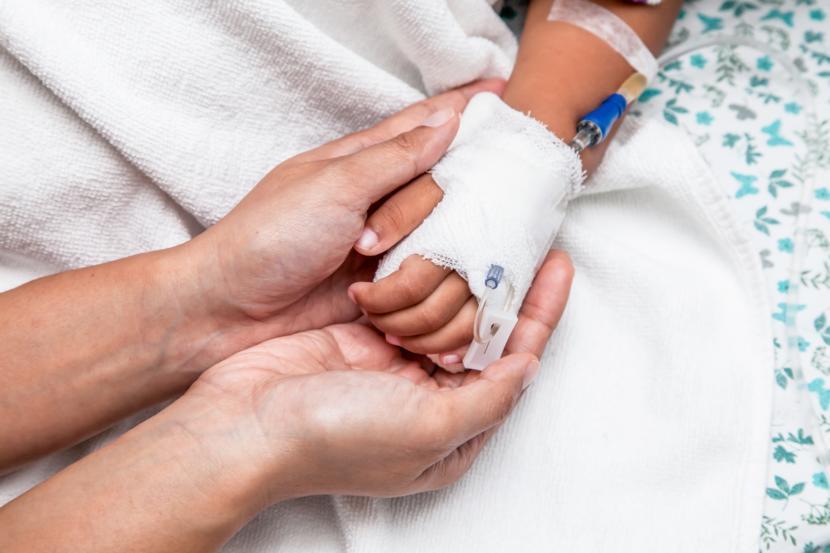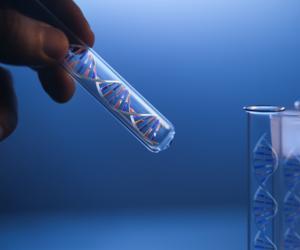Study Finds 3% of Pediatric Non-Hodgkin Lymphoma Cases Are Transplant Recipients

Lymphoma is a blood cancer that affects both children and adults.
Lymphoma begins its growth in the lymphatic white blood cells of the lymph system. This system is a major warrior in fighting off infections and diseases. It is part of the body’s immunity team.
The lymph system loops throughout the body and connects to many major organs. It extracts lymph fluid from the organ spaces and transports it back to the bloodstream.
At “terminals” along the way, nodules (lymph nodes) are assigned the major task of filtering the lymph fluid to capture and store the lymphocytes for use as needed. Cancer of the lymph system is called Hodgkin lymphoma.
According to the National Institute of Health (NIH), the two main types of lymphoma are Classic Hodgkin lymphoma and Non-Hodgkin lymphoma. Most with lymphoma have the “classic type”; identification is made via telescopic study of cells - the presence of large, abnormal cells referred to as “Reed - Sternberg” cells - seal the diagnosis of Hodgkin lymphoma. This type of lymphoma has a high cure rate.
There are many sub-types of non-Hodgkin lymphoma (NHL). According to the NIH, three different types of white blood cells play a part and - once identified - indicate preferred treatment:
- B-cells - The most common type of non-Hodgkin lymphoma in children, B-cells produce antibodies that attach to bacteria or viruses that enter our body. As cancer cells are viral material, this is a major factor in the body’s response to the cellular attack. This joining process makes the cells identifiable by the immune system as cells to be destroyed.
- T-Cells - Lymphocytic T-cells are not only crucial in speeding up or slowing down the action of other immune system functions, but are also involved in the process of cell destruction. Additionally, they assist the B-cells in producing antibodies.
- Natural Killer Cells (NK) - attack cancer cells and other viruses.
Because lymph tissue is found throughout the body, the cancer can start in a variety of locations. Diagnosis requires a physical exam and various tests which often include cat scan, pet scan, chest x-ray, numerous kinds of blood work, perhaps a bone marrow test and a lymph node biopsy. Also for diagnostics purposes, a lumbar puncture may also be indicated (NIH).
Once NHL is diagnosed in the young patient, the American Cancer Society (ACS) informs us that “treatment for the cancer needs to be started as soon as possible.”
The Society incudes in their article that “lymphomas in children grow very quickly and may already be quite large by the time they’re diagnosed”.
These lymphomas usually respond well to chemo, which can kill large numbers of lymphoma cells in a short period of time. We are further informed by the Society that surgery is more often used to obtain a biopsy. (ACS)
With test result information at hand, the pediatric oncologist “stages” the status of the cancer at one of 4 levels, according to its spread of cells. This staging plays a role in choosing the best treatment approach and in determining the child’s expected survival rate. (ACS)
Stages I and II are at a “limited stage” while those designated as Stages III and IV are thought of as “advanced stage disease.” (ACS)
The ACS notes that “even children with early-stage lymphomas (Stage I or II) are assumed to have more widespread disease than can be detected with exams or imaging tests. Because of this, local treatments such as surgery or radiation therapy alone are very unlikely to cure them. Therefore, chemotherapy is an important part of the treatment plan for all children with NHL”.
Recent research
In a recent Washington University of St. Louis study of American children and young adults with non-Hodgkin lymphoma, it was found that 3% of those children had a prior organ transplant.
The study results, published in the journal, Cancer, stated that “The chance of a child who receives an organ transplant developing NHL is 100 to 200 times higher than in children who haven’t had one.”
Following any organ transplant, the recipient needs to take anti-rejection medications to prevent destruction of the transplanted organ. Unfortunately, these medications play havoc with the person’s immune system and makes them more susceptible to contracting diseases such as cancer.
Other past studies
Other studies have suggested the increased NHL rate in children could be related to Epstein-Barr virus infections (such as mononucleosis). The Epstein-Barr virus has been shown to contribute to the development of lymphoma.
Additionally, it has been found that prior treatment for other cancer increases a child’s risk for developing NHL (The NIH National Cancer Institute).
“Children less than 5 years old who had transplants accounted for the largest share of NHL cases among young people,” according to findings of that St. Louis study.
According to organdonar.gov, “the organs that children tend to need most varies by age:
- Most children under the age of 1 year are waiting for a liver or a heart.
- Most children age 1 to 10 are waiting for a kidney or liver, followed by heart.
- Most children age 11 to 17 are primarily waiting for a kidney, followed by a liver.
Can doctors prevent this?
Dr. Elizabeth Yanik, an orthopedic surgery professor at the Washington University School of Medicine in St. Louis, directed the study. “Although very few U.S. children and adolescents have received a solid-organ transplant, this population contributes a disproportionate fraction of pediatric NHL cases,” Yanik and her colleagues wrote.
The team also noted that “doctors could reduce non-Hodgkin lymphoma (NHL) in children and adolescents by taking steps to prevent it from happening in those who receive transplants”. This approach will obviously involve more study.
Conclusions of the study:
- “Among children and adolescents, solid organ transplant recipients contribute a substantial fraction of NHL diagnoses, particularly DLBCL diagnoses. This fraction has increased over time. Prevention efforts targeted toward this group could reduce the overall pediatric NHL burden.” Cancer 2017. © 2017 American Cancer Society.
- Also, “the findings suggest that studies should be done on the mechanisms leading to transplant recipients developing lymphoma. That kind of research could provide new insights on lymphoma development, and help in the prevention and treatment of this high-risk population.” (Washington University of St. Louis.)
The importance of clinical trials
Enrolling a child in clinical trials is a way for that child to receive the most up-to-date treatment for their type of cancer.
According to Pediatric Trials Network, “5000 children are currently enrolled in drug trials with 10 products submitted to the FDA for hopeful approval. 30 studies including 18 clinical trials are being conducted”.
The research has spawned “29 publications with more than 50 drugs studied”.
According to the American Cancer Society, “other pediatric NHL studies underway now include research to determine if early stages of NHL can be treated with less chemo, can new drugs and new combination of drugs improve cure rates, and can new forms of immunotherapy drugs be helpful in treating childhood NHL.”
Also under study is “what is the best length of treatment for all forms of NHL, can the safety and effectiveness of stem cell transplants be improved upon, and can less intense treatments provide an outcome as good as highly intense treatments, while possibly helping children avoid some long-term side effects?” (ACS)
The medical community and parents whose children are being treated for NHL eagerly await study outcomes, hoping that during these studies, scientists will come upon a cure.
References
https://www.ncbi.nlm.nih.gov/pmc/articles/PMC2873967/
https://organdonor.gov/about/donors/child-infant.html
http://onlinelibrary.wiley.com/doi/10.1002/cncr.30923/full
https://organdonor.gov/about/donors/child-infant.html
http://onlinelibrary.wiley.com/doi/10.1002/cncr.30923/full















